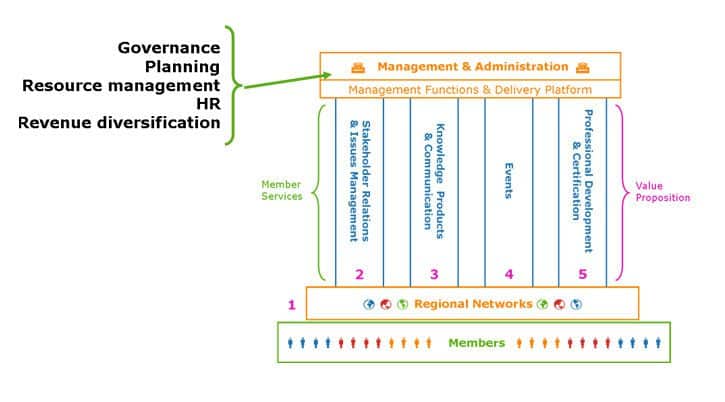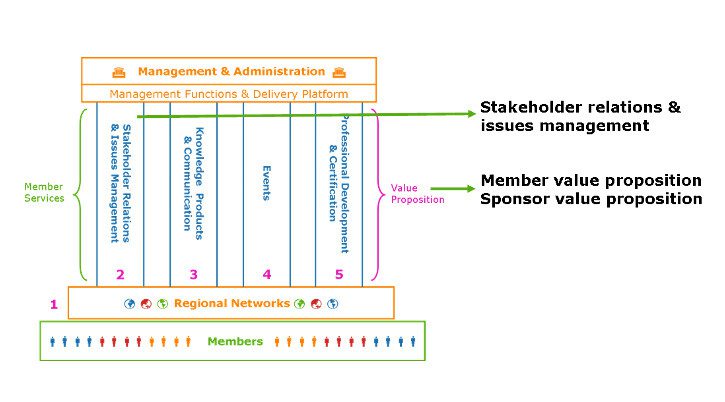A membership organization is an organization, typically not-for-profit, that collects fees from its members in return for services, and whose primary purpose for existence is to serve its members.
A membership organization is a business and must be operated as one to be sustainable. At a minimum, this means that revenue must exceed costs and that the organization’s resources must be used effectively and efficiently to deliver a high level of service to members.
More than ever before, members are questioning the ROI on their membership fees. Membership organizations must be seen to deliver value commensurate with their fees and in excess of alternative options.
A high performing membership organization (HPOTM) delivers a highly efficient “back stage” and a highly valuable “front stage”. Back stage efficiency drives down costs and improves service delivery. Front stage value drives revenue.
The back stage elements are the internal systems and processes that support the outward facing activities of the organization. Like plumbing and electricity, the back stage is invisible when it is working well and painfully visible when it is not.
The front stage includes the elements that stakeholders and members see and interact with. They are highly visible and have a direct impact on the credibility and profile of the organization.
Interview with Erin Roberts –The High Performance Membership Organization
8 Elements of the High Performance Membership OrganizationTM
There are 8 elements to the High Performance Membership Organization:
- Governance
- Planning
- Resource management
- Human Resource Management
- Revenue diversification
- Member Value Proposition
- Sponsor Value Proposition
- Stakeholder relations and issues management
These 8 elements comprise the front-stage and back-stage elements that tie back to the Sustainability Model for membership organizations. Each of the eight elements plays a key role in the success of the membership organization. These eight elements map back to the Sustainability Model.
The Sustainability Model has 5 pillars. We have observed that membership organizations that have all of these pillars in a healthy state are invariably sustainable. In practice however, many organization are not able to provide all five pillars. Therefore they must be particularly strong in the service areas they can provide – to balance their more limited scope.
5 Pillars of the Sustainability Model for membership Organizations
-
Regional Networks
- The organization has grass-roots chapters or networks that connect directly with members in their local area.
-
Stakeholder Relations and Issues Management
- This is often referred to as advocacy or government relations. The organization has a program that builds and strengthens relationships and influence with stakeholders and proactively manages issues affecting its members.
-
Knowledge Products and Communications
- The organization publishes and/ or provides meaningful reference materials that help its members pursue their business, trade, profession or special interest.
-
Events
- The organization provides in-person events where members can network or learn, or both.
-
Professional Development and Certification
- The organization provides recognized and relevant learning opportunities and/ or certification that helps its members to become more proficient at their business, trade, profession or special interest.
HPO Back Stage
Back Stage Efficiency = Lower Costs, Better Service

HPO Front Stage
Front Stage Value = Higher Revenue

Higher Revenue + Lower Costs = Higher Sustainability
How to Become a High Performance Organization?
Find out where you are now and close the gap. We’ve taken the elements of the HPO Model and rolled them out into comprehensive action steps and processes that allow membership organizations at any level to identify the gap between their performance and that of the high performing organization.
These action steps and processes are identified in an assessment template that can be used to identify areas of excellence and areas for improvement.